
In this article, learn how to make a portable sound studio and record with an ODROID-XU4Q, by exploring Stephen Baldassarre's tinkering project. Stephen Baldassarre is a drummer working in two active bands who does video and film production. More importantly, he is also the engineer for Golden Clam Machine Studio in Boise, Idaho. Clients include Steve Schwarz of the metal band Pyrael and the non-profit organization Story Story Night. Stephen recently posted a Youtube video about his somewhat unusual recording rig, which is what piqued ODROID Magazine’s attention about his setup.
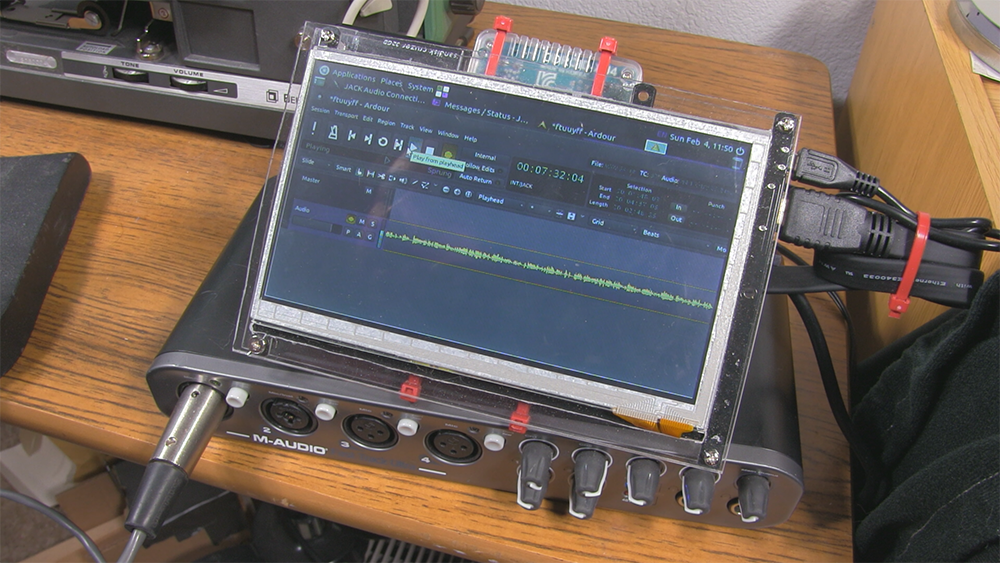
Hardware requirements
- ODROID-XU4Q
- 40mm 5V fan
- ODROID-VU7
- 5V/6A US Power Supply
- ODROID-XU4 clear case
- SanDisk 64GB MicroSD system drive
- SanDisk 64GB USB drive (for recording small track counts)
- USB3.0 to SATA Bridge Board Plus with SanDisk 240GB SSD (for recording large track counts)
- Plexiglass sheet
- 4 x small zip-ties to hold it all together
Software requirements
- Ubuntu (ubuntu-16.04.3-4.14-mate-odroid-xu4-20171212)
- JACK Audio Connection Kit – Qt GUI V0.4.2: 4/7/2016
- Ardour 4.6.0 “Evening Star”
Stephen, why did you make this? I use computers for audio and video production on a daily basis but try to rely on dedicated solutions as much as possible. Unfortunately, there is a lack of inexpensive hardware systems in today’s market that can handle the variety of live recordings that make up the majority of my business. I have been using the M-Audio Fast Track Ultra (https://goo.gl/bpx3Ly), an USB interface with six analogue inputs, with a laptop computer running Sony Vegas for smaller live recording projects like ‘Story Story Night’, which is largely speech with some live music in between story tellers. Every show is recorded, mixed and uploaded to various streaming services for all to hear. I do not like bringing my laptop to shows because there’s a lot of things that can go wrong, including Microsoft Windows-related glitches or theft. For more demanding shows, like a 3-hour rock concert, I have been taking my HD24, which is much more reliable and has more audio inputs than the Fast Track. However, I have to gut my studio and re-patch my PA system to take it on the road. I began wondering if I could make a sort of modular system to cover all my live recording needs and maybe starting a cottage industry of making/selling them. I thought some kind of single-board computer might be able to handle this task. I could not find any examples on the internet of anybody doing it, so I just took a chance on the ODROID-XU4Q, due to its better specification.
What hardware did you use? I sort of worked backwards on that. My colleague Steve Schwarz, an avid GNU/Linux fan, has been suggesting I try Ardour for years. Ardour 4 requires at least 2GB of RAM, so that eliminated most other SBCs. I liked the idea of a passive heat sink: quiet operation, less power, less chance of failure. I did not want to deal with a mouse and keyboard on-location, so a touch screen was the obvious solution. I chose the ODROID-VU7 as I wanted a somewhat larger screen and did not feel like the resolution was particularly important. I was not going to mix on it; I just wanted to record directly to an USB drive and later move the files to my studio computer or HD24 to start mixing. Obviously, an USB drive would not handle a lot of tracks, so I also got a USB3 to SATA adapter with 240GB SSD for larger shows.
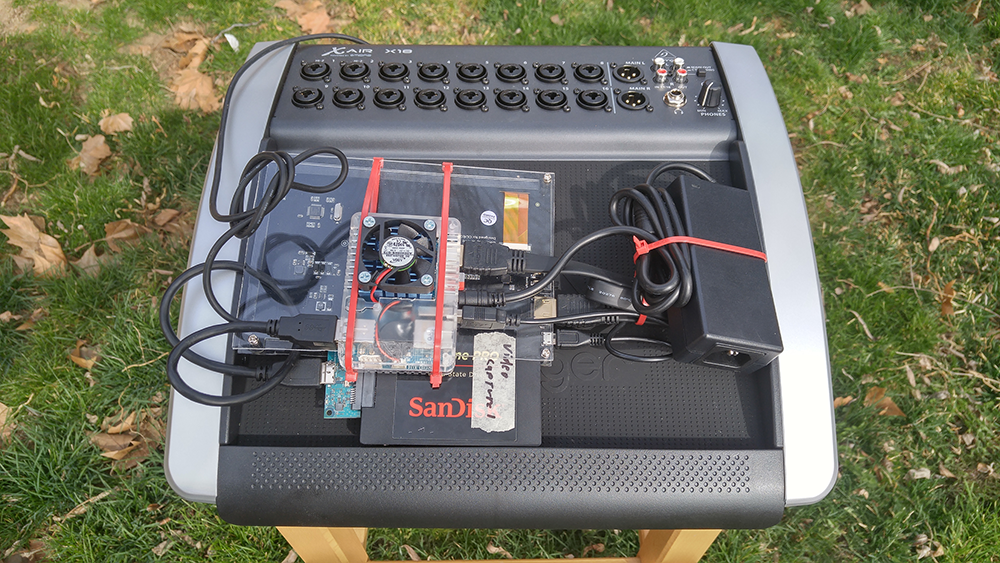
How did you create the setup? I was not sure what kind of power requirements I would have, so I opted for a 5V 6A power supply. Most Ardour users seem to use Ubuntu, so the OS was actually the last decision I made. I copied an Ubuntu 16.04 image to a MicroSD card I already had. I had some Plexiglass left over from an unrelated project, so I cut out a rectangle the size of the VU7 and used the supplied standoffs and screws to mount the Plexiglass to it. I drilled some holes in the back, the same size and spacing as the feet on the ODROID-XU4’s case, then strapped the ODROID-XU4Q in place with a couple pairs of zip-ties. Channels were cut into the Plexiglass with a small file to keep the zip-ties from sliding. The ODROID-XU4Q is off-set so it acts as a stand for the screen, holding it at an angle if I set it on a table. It looks a little funny but it lets me take everything apart very quickly if needed.
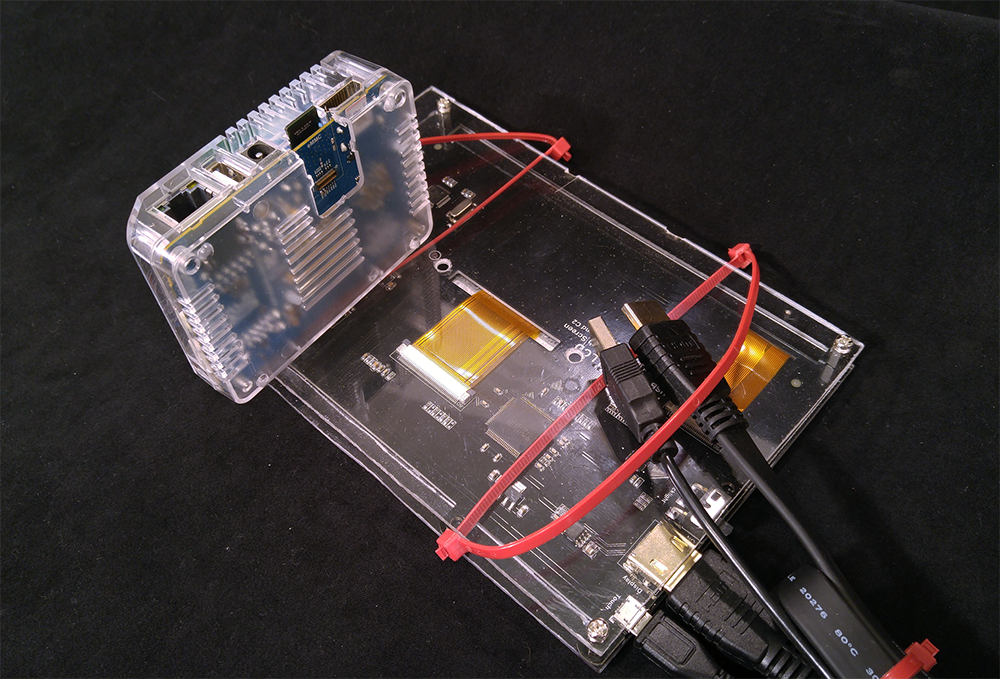
How do you use your portable studio? Initially, the Fast Track lived in the back of my PA all the time, with various outputs from my audio mixer feeding into it. For most shows, I put the main voice on input-1, and all other voices on input-2. Instruments are sub-mixed to stereo and fed to 3-4 while audience mics are 5-6. Most of my clients work on extremely tight budgets. Like with SSN, I only have 2 ½ hours of clock time to turn a 2-hour show into two 45-minute podcasts. I have become rather adept at getting good mixes on the fly, but it is always best to keep the vocals separate. The audience mics, which are useless for the live sound, were fed directly to the interface.
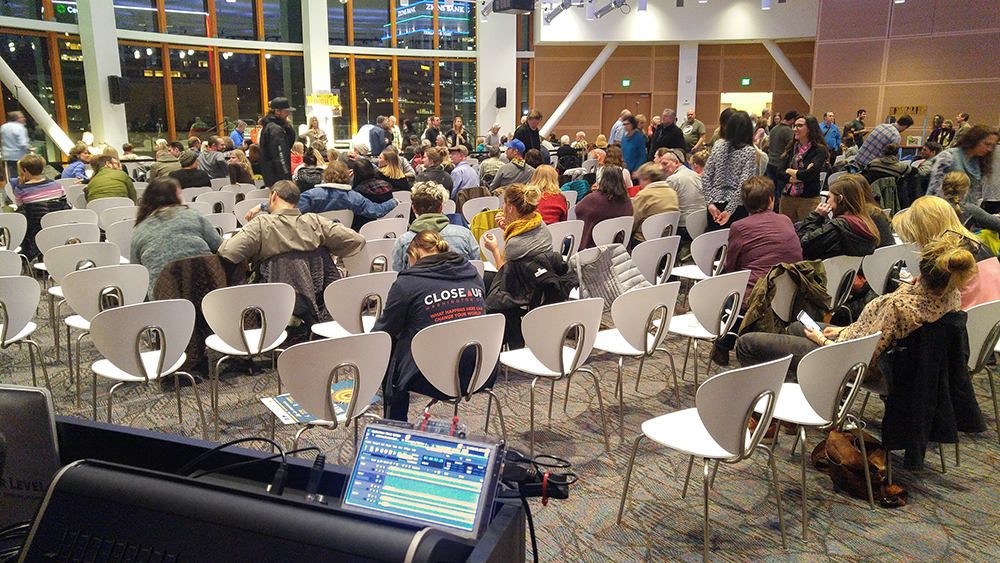
What I am usually doing off-late is using a Behringer X18 digital mixer with USB interface capabilities. That lets me record 6-track sub-mixes for small jobs but I can have up to 16 independent tracks if I want them, all without reconfiguring anything. I have also tested up to 26 tracks from an X32, a 32-channel digital mixer with mixed (no pun intended) results. Needless to say, I am glad I got in the habit of having a backup recording system at every show: https://www.youtube.com/watch?v=4TVOxfPE2ps.
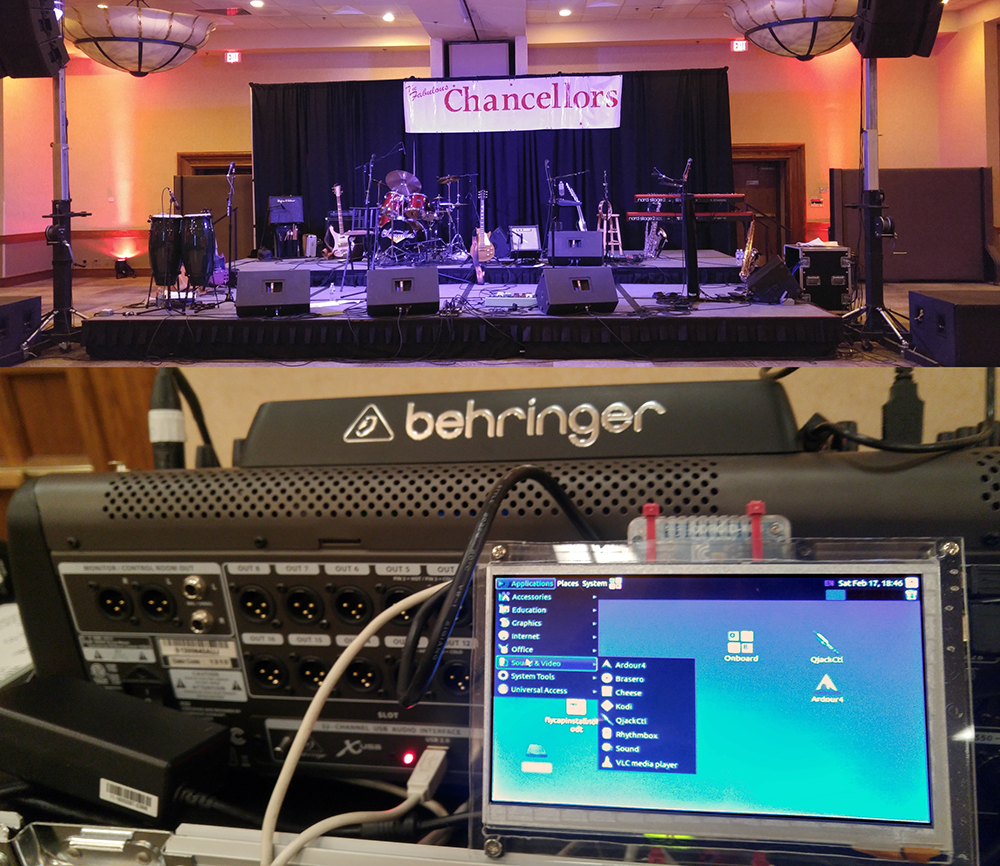
What problems did you encounter during the build and how did you solve them? I had no experience with SBCs or Linux before this project, so I could not have done it without the help of Steve Schwarz. He lives in New York, so getting advice required patience. Incidentally, I came up with this Ubuntu/Ardour recording system because of his suggestions and he put an HD24 and analogue console in his studio because of me. Anyway, I did not know that everything important happens through the terminal when I got started. The only command I really needed to know, though, was:
$ sudo apt-get install ardourI am so glad that Ardour 4 was in the Ubuntu repository so it would just download and install along with all its dependencies. Getting it working properly took some experimentation. I discovered that Ardour did not like being installed if I updated the OS, so I left it as the stock “ubuntu-16.04.3-4.14-mate-odroid-xu4-20171212” install.
The ODROID-XU4Q has a tendency to overheat and crash when recording many tracks at a time. Adding a fan to the ODROID-XU4Q’s oversized heat sink helps immensely. It is very sensitive to static electricity, so I need to figure out some kind of shielded housing. In the meantime, I have gotten in the habit of grounding myself before touching it during recording sessions.
With the Fast Track, the main outputs are disabled and the alternate outputs are drowned in reverb. It is possible to do overdubs (record more tracks later) but I do not recommend it. This seems to be an intentional handicap when not using M-Audio’s proprietary drivers.
JACK is very important with the Fast Track because Ardour will not connect directly to the ALSA drivers in this case. JACK must be opened and started for Ardour to connect. Ardour will not start JACK automatically, and cannot be set to “real time” or Ardour will not open or create sessions. It’s also important to make sure sample rates match before running Ardour. If using a digital mixer, Ardour must match the mixer’s internal clock before connecting. JACK is not necessary with the Behringer digital mixers, and only the Fast Track Ultra, X18 and X32 were tested.
Since adding a fan, I have bench tested the ODROID-XU4Q recording 16 tracks for two hours straight without issue. Before adding the fan, the heatsink was hot to the touch after five minutes. With the fan, it stays in low-speed about 2/3rds of the time with brief bursts of higher speed and the sink feels cool. CPU and memory usage are fairly minimal so I do not doubt it can record 32 tracks at a time for sustained periods. If I have one real regret with this project, it is that I should have spent the extra $25 on the 8” high-res screen because many program windows don’t fit in the 800x480 space. I will likely get a larger screen soon.

Be the first to comment